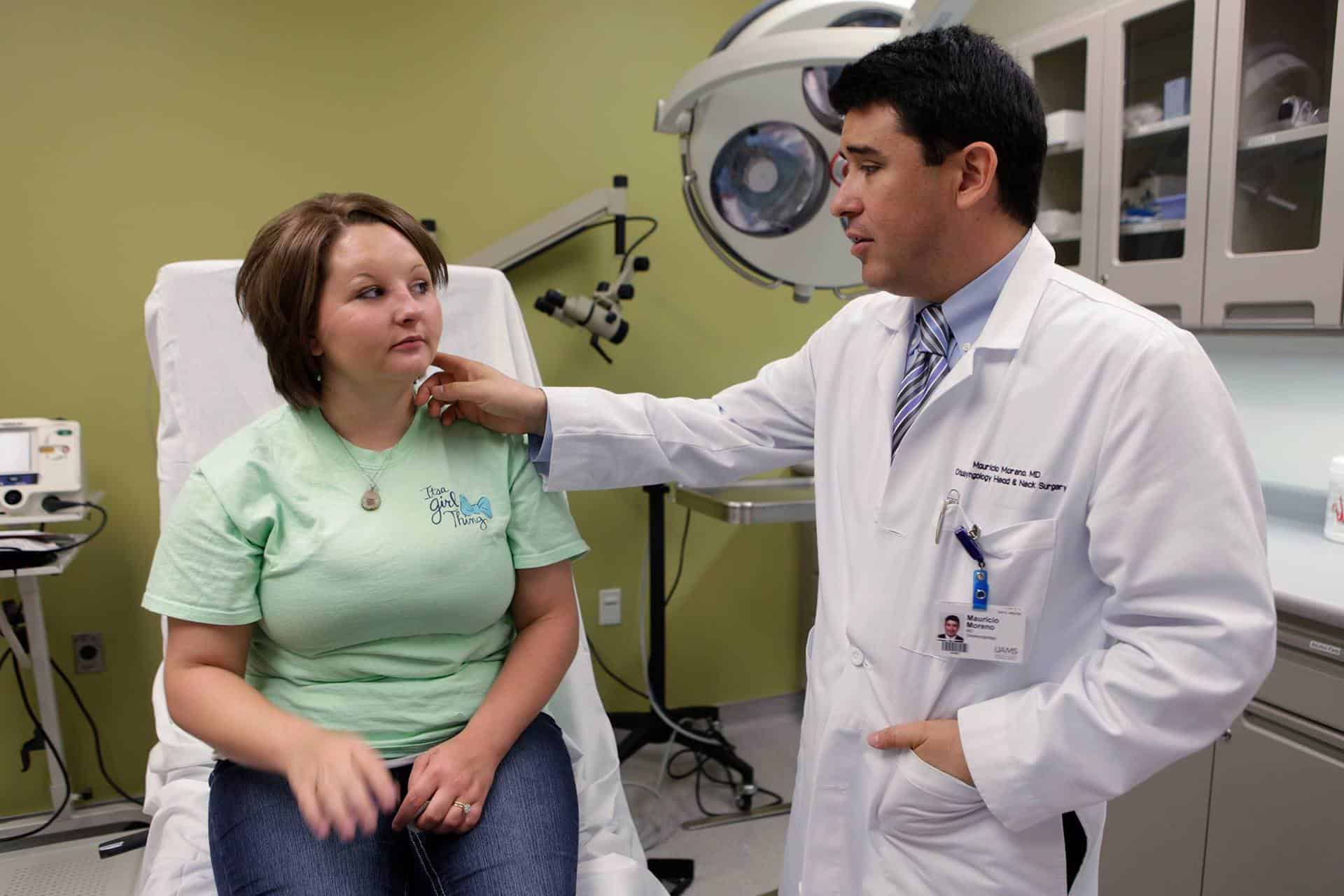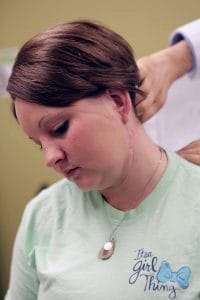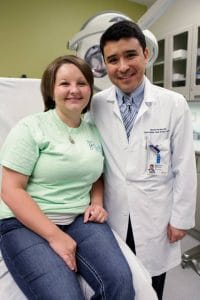Russellville Woman’s Scalp Reattached by UAMS Surgeon
| “I just remember the machine grabbing my hair and I was in it.”
Cynthia Thompson, 22, was working at a factory in Russellville in June 2014 when machinery ripped her scalp from her head. She can recall many of the details clearly.
“They pulled me out. I knew I was bleeding, but I didn’t realize I had no scalp until later,” she said. “I walked to the break room. People were holding my arms, but I walked. I climbed on the gurney by myself.”
Thompson is ambitious. She said she’s always been stubborn – and that June afternoon was no exception.
“I was pretty combative the whole time.”
She protested when emergency workers had to cut her out of her clothes.
“Those were my favorite boots! And do you know how hard it is for me to find pants to fit someone my height?”
She remembers the ambulance ride and the short stay in a nearby emergency room. Her scalp arrived to the hospital shortly after she did thanks to quick thinking from her supervisor who retrieved it from the machine.
Thompson was quickly put on a helicopter to UAMS, in spite of her protests.
“I didn’t want to fly,” she said. “I refused. I like for my feet to stay on the ground.”
Mauricio Moreno, M.D. is an associate professor and head and neck surgeon in the UAMS Department of Otolaryngology. He was just finishing a case in the operating room when he received word that a patient was in the ER whose scalp had been ripped off. He went to talk to the family.
“Fortunately, I realized they had kept the scalp and all of its tissues in proper condition,” Moreno said. “We immediately prepared an operating room for an emergency microvascular replantation case.”
The machine took off all Thompson’s scalp, most of her forehead, both ears and skin from the back of her neck. It took three hours from the time the accident happened in Russellville until Thompson was in the operating room. That’s an appropriate time frame, according to Moreno.
“Ideally, you want it to be less than eight hours. The sooner the better, of course,” he said.
Moreno and his team began the procedure by cleaning the tissue. The most time-consuming and crucial part was reconnecting the blood vessels in front of the ears that constitute the main blood supply of the scalp.
“The tissue cannot survive if it doesn’t have blood supply,” Moreno said. “These blood vessels are very small, about 1.5 millimeters in diameter. That’s about as thick as a quarter.”
Reconnecting the blood supply took the surgeons about three hours working under a high-powered microscope. Then they began reattaching the muscles, tissue,ears and skin.

It’s been a year since Thompson lost her scalp in a workplace accident. Since then she married the love of her life.
Some of their help came from an unlikely source.
“I have a star tattoo on my neck,” Thompson said. “I got it when I was 18. They used that to line my scalp up.”
Half of the star was below the rip, the other half was on top.
“So, who says tattoos aren’t good?” Thompson said with a smile.
Nine hours later, Thompson was back in one piece. Her doctors said they were very pleased with the results, especially when her hair started to grow back less than 48 hours after surgery. Moreno said in medical literature he was able to find less than 20 cases that were as complicated at Thompson’s.
Thompson, who was engaged at the time of the accident, was able to follow through with her wedding a few months later. She was determined to not let the accident affect her life any more than it already had. She and her husband, John, live in Atkins.
“I never imagined that it would come together this well,” Thompson said. “I had the best team of doctors. I couldn’t have asked for better care. The way the nurses and staff treated me was fantastic. They truly have a wonderful team here.”
“In order to get a success like this, you have to work together,” Moreno said. “Everyone who was involved took note of the emergency of the situation and acted quickly.”


